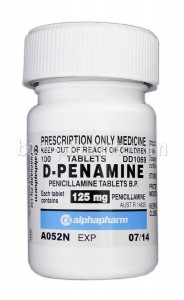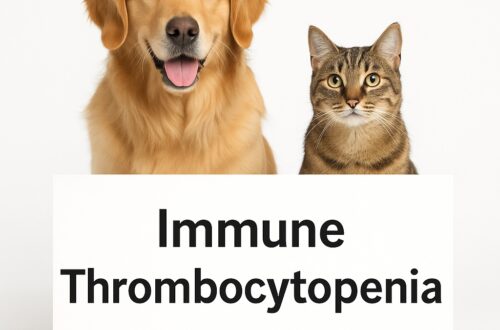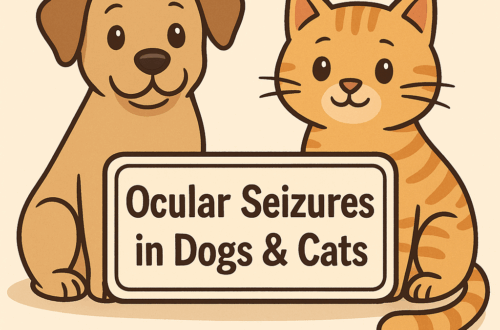The liver is a vital organ charged with many important functions, including removing toxic substances from the bloodstream. One of those toxins is copper. Unfortunately, some dogs have changes in their livers that traps copper inside individual liver cells, gradually resulting in toxicity. This week I spend time discussing this important liver disease, and hope you find the information helpful and shareworthy. Happy reading!
Copper Storage Disease – What is it?
There are three major pathways by which copper can accumulate to toxic levels in the liver:
- Ingestion of foods with high copper quantities
- An abnormality in the transport of copper by special liver proteins
- Liver injury that leads to an imbalance of copper
Approximately 50% of dietary copper is ingested in the small intestines while the remainder is lost in feces. Copper circulates in the blood stream to liver where it binds to a unique protein (copper transporter 1 / CTR1) to gain entry into the liver. Once inside the liver, this nutrient binds to special proteins called chaperones that shuttle it to various sites inside individual liver cells. There are many different chaperones, and an abnormality in any one of them can ultimately lead to disease.
Some breeds are over-represented due to genetic abnormalities. Bedlington Terriers have a mutation in a gene called Copper Metabolism Murr1 Domain-Containing Protein 1 (COMMD1) where exon 2 is deleted. This mutation results in abnormal copper transportation to and handling by the biliary system.

Labrador Retrievers are suspected to have a genetic disorder in which copper accumulates to toxic levels in a specific part of the liver (centrolobular regions). This breed is also over-represented for another liver disease called chronic hepatitis that could contribute to toxic accumulation. Doberman Pinschers are thought to have a primary defect in copper metabolism; they, too, develop chronic hepatitis that can promote toxic levels in the liver. Other breeds that are suspected to have metabolic defects that contribute to copper storage disease are:
- Dalmatian
- West Highland White Terrier
- Anatolian Shepherd
- Skye Terrier
Copper Storage Disease – What are the clinical signs?
There are no specific clinical signs associated with this disease in dogs. Indeed some dogs do not have any clinical signs at all! Female dogs are more often affected compared to male dogs, and clinical signs frequently manifest at seven years of age (range: 2-10 years). Clinical signs may be vague, and potentially include:
- Reduced activity level
- Decreased (or loss of) appetite
- Intermittent vomiting
- Nausea
- Weight loss
- Increased thirst
- Increased frequency of urination
- Yellowing of the skin and “whites of the eyes”
- Diarrhea
- Abdominal fluid accumulation
Some patients with marked liver dysfunction develop neurological deficits. This syndrome is called hepatic encephalopathy. Click here to learn more about hepatic encephalopathy.
Copper Storage Disease – How is it diagnosed?
Your family veterinarian will ask you a lot of questions about your pet to obtain a thorough physical examination. Your pet will also receive a complete physical examination. Initial blood and urine testing commonly includes the following:
- Complete blood count: a non-invasive blood test that provides information about red blood cells, white blood cells, and platelets
- Biochemical profile: a non-invasive blood test that provides information about kidney function, liver & gastrointestinal enzymes, and electrolytes (e.g. sodium & potassium)
- Urinalysis: a non-invasive urine test that provides information about kidney function and the presence of concurrent diseases, including urine tract infections and abnormal urine crystals
- Serum bile acids: a non-invasive blood test that specifically determines if a patient is living with liver dysfunction
Ultimately a liver biopsy is required to definitively diagnose this disease. There are multiple ways to obtain a liver biopsy from a dog. As part of the biopsy evaluation, the amount of copper in the liver is quantified. To learn more about them, please click here. Fine needle aspiration with cytology is not an accurate method for diagnosing this disease.
Copper Storage Disease – How is it treated?
Copper storage disease requires lifelong therapy. With early identification and appropriate treatments, pets are often able to lead normal, high quality lives. Successful treatment requires the following:
- Removal of toxic levels from the body
- Prevention of further accumulation in the body
Chelation is the process of administering a medication to help the body get rid of the excess copper that has accumulated in the liver. A medication called penicillamine is used to this effect, as it leads to mobilization of copper from tissues and promotes copper excretion in the urine.

The length of time needed for effective chelation is variable and patient dependent. Ideally the liver is re-biopsied after a certain period time to re-measure the amount of copper in this organ to confirm tissue concentration is no longer toxic. However, many pet parents don’t elect this recommended course of action. Thus veterinarians often indirectly assess response to chelation therapy through serial measurements of certain liver enzymes and serum bile acids. Concurrent supplementation of vitamin 6 (pyridoxine) is frequently recommended while a patient receives penicillamine.
The second step in treatment is reducing the intake of food and water with high levels of copper. Many premade prescription diets are available and suitable for dietary management. Alternatively, homemade diets can also be formulated by partnering with a board-certified veterinary nutrition specialist. Pet parents can peruse a national database from the United States Department of Agriculture to sort foods by copper content. This is an easy way to select foods low in copper to feed as snacks and/or to incorporate into homemade diets. Pets should drink water low in copper (less than 1 part per million).
In addition to chelating excess copper from and reducing further accumulation in the body, some supplements may be recommended to support liver tissue. These may include:
- Vitamin E – antioxidant & anti-fibrotic (anti-scarring) supplement
- s-adenosylmethionine (e.g. SAMe, Denosyl™) – antioxidant supplement
- Ursodeoxycholic acid (e.g. Ursodiol™) – helps promote improved bile flow
- Polyunsaturated phosphatidylcholine (e.g. PholChol™) – anti-fibrotic supplement
- Losartan – anti-fibrotic supplement
- Silibinin / Silymarin / Milk thistle – liver protective supplement
Upon successful complete of chelation therapy, an affected pet will likely be prescribed either a reduced dose of penicillamine or daily zinc supplementation.
The take-away message about copper-storage disease…
Copper storage disease is a disease characterized by excessive accumulation of copper in the livers of affected patients. Clinical signs are variable, as some pets may not have any clinical signs while others may have severe neurological deficits secondary to liver dysfunction. A definitive diagnosis is made via a liver biopsy and quantification of copper in the tissue. Treatment requires a multimodal approach and life-long therapy. Partnering with a board-certified veterinary internal medicine specialist is often instrumental for developing the most effective treatment plan.
To find a board-certified veterinary internal medicine specialist, please visit the American College of Veterinary Internal Medicine.
To find a board-certified veterinary nutrition specialist, please visit the American College of Veterinary Nutrition.
To find a board-certified veterinary surgeon, please visit the American College of Veterinary Surgeons.
Wishing you wet-nosed kisses,
cgb




